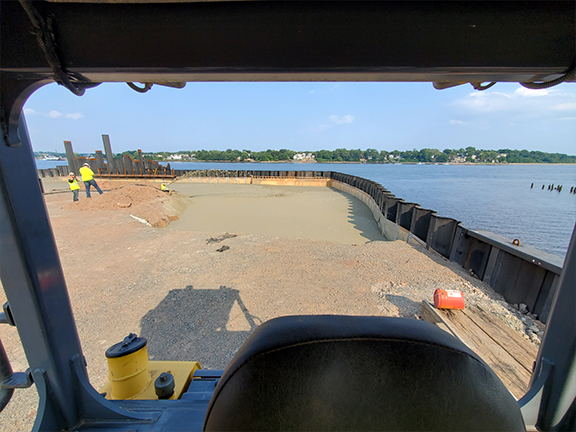
Cellular Concrete
Floor Technologies is an expert in cellular concrete solutions, offering a wide range of applications such as load-reducing backfills, soil stabilization, grouting, retaining wall backfill, lightweight fills, and more.
Cellular Concrete for Stronger, Lighter Results
Floor Technologies provides cutting-edge equipment, advanced chemical and mix designs, and a skilled team for your lightweight cellular concrete installation needs. We bring our expertise directly to your site, overseeing the production of foam concrete, ensuring product quality meets job specifications, and conducting quality control sampling throughout the placement process.
The Subfloor Experts
Find the right solution for your floors
Cellular Concrete
Applications
- Lightweight Load-Reducing Backfill
- Soil Stabilization
- Annular Space Grouting
- Tunnel Abandonment/Backfill
- Pipe/Utility Abandonment
- Pipe/Utility Trench Backfill
- Bridge Abutment Fill
- Retaining Wall Backfill
- Lightweight Roof Deck Systems
- Geofoam Applications
- Permeable Lightweight Fill
Benefits of Cellular Concrete
- Lightweight: Cellular concrete is significantly lighter than traditional fill materials, which can be an advantage in certain construction applications.
- Low density: The low density of cellular concrete makes it suitable for use in a variety of applications, including as a fill material for voids and poor soil conditions.
- High insulating properties: Cellular concrete has high insulating properties, which is beneficial in energy-efficient building construction.
- Cost-effective: Cellular concrete can be more cost-effective than traditional fills due to its lower weight and fast, efficient rate of installation.
- Customizable: Cellular concrete can be customized to meet the specific needs of any project, by adjusting the density, compressive strength, or curing properties.
- Sustainable: The use of cellular concrete fill generates less carbon emissions by decreasing trucking volume of material delivered to a project.
The Subfloor Experts
Find the right solution for your floors
FAQ – Cellular Concrete Questions
Cellular concrete is a type of concrete that is made using Portland Cement, water, and tiny, stable air bubbles. The air bubbles are introduced into the cellular concrete using a foaming agent. The resulting concrete is lightweight, very flowable, and stable with virtually no bleed water.
In order to create the proper cellular concrete mixture, foam liquid concentrate is run through a foam generator, which combines air, water, and the concentrate to create a preformed foam (air) bubble. These small, highly-stable air bubbles are mixed with a cement slurry through inline-injection, and pumped via a hose to the fill location.
The main value proposition of cellular concrete is that it can be used in a variety of applications where a strong, lightweight fill material is required such as slope stability fills, annular space fills, and abandonment applications. It is also used for bridge abutment and retaining wall backfill. Cellular concrete’s insulating properties make it attractive for lightweight roof decks in energy-efficient buildings.
Cellular concrete has a much lower density than traditional structural concrete. Standard concrete has a density of approximately 145 pounds per cubic foot (PCF) whereas the most common cellular concrete applications are in the 30 PCF range. Cellular concrete should be viewed as a soil replacement when considering strength. Even at its lightest density, cellular concrete is stronger and more durable than the best compacted soils. Common applications yield a bearing capacity of over 14,000 pounds per square foot (PSF).
There are several benefits and advantages of using cellular concrete as a solution on your next project. Cellular concrete has these properties and benefits:
- Lightweight
- Very flowable and virtually self-leveling
- Extremely low bleed water
- Very stable volume
- Can be pumped long distances and at low pressure
- Low shrinkage properties
- Adjustable mix designs for strength and density requirements
- Very strong compared to traditional fills











